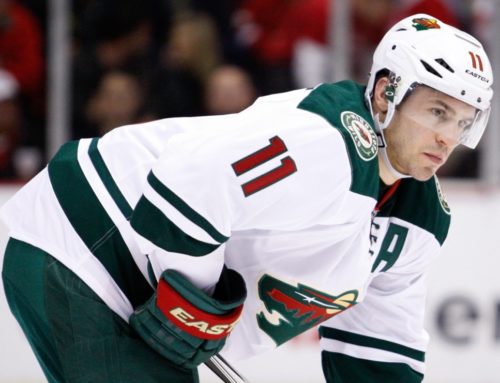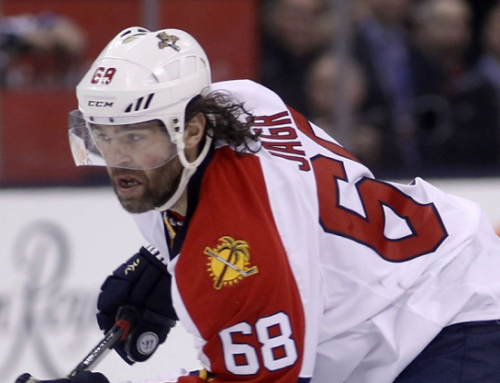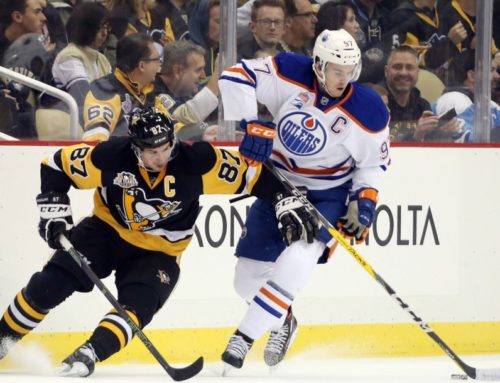
Could revealing questions used at the NHL Draft Combine actually be misleading?
In this day and age, we have more data and information at our fingertips and we assume that it will help us make better decisions.
This week’s article, brought to you by Gare Joyce from Sportsnet, is about such a case.
How the Draft Combine interviews can be hugely beneficial for NHL teams. https://t.co/QUzO2UeEWr @GareJoyceNHL pic.twitter.com/eE956h3Pjr
— Sportsnet (@Sportsnet) June 1, 2016
He re-tells a Bryan Murray story of how Murray uncovered some information about an unnamed draft prospect by asking some innocent questions.
The story goes, as the interview is ending Murray asks about the place where the kid played. The player responds like we all would with a generic yet positive comment of the locale.
Murray then states that he’s going to that place and would like to know of some good places to drink and have a good time. Joyce writes, “The prospect then rhymed off a bunch of watering holes, various waitresses names and the town’s one strip club”.
That raised a red flag with Murray because he had heard of some rumors that the player was kind of a partier.
The story continues, indicating that Murray chose to draft another player, and it was revealed that the first unnamed prospect had issues with alcohol later in life.
Sounds good does it not? How a few simple questions posed at the right time and in just the right way, the player gave up more information than they would have done so if directly asked about it. That is how the article reads. “Murray’s line, seemingly a throwaway, is a golden moment in the annals of NHL combine interviews,” writes Joyce.
Except for one thing at the very end. Despite the first player’s drinking problems, he ended up playing 1,000 NHL games, according to Joyce. That’s close to twelve seasons in the NHL.
Readers immediately wanted to find out who the prospect was and started guessing with their comments. Here are some additional facts which were provided in the story:
The prospect played in the CHL, he came off of a disappointing junior season, and the conversation between the kid and Murray was at a NHL Draft Combine.
Bryan Murray has been in the NHL since 1981 in some capacity. He had been on the staff of the Washington Capitals, Detroit Red Wings, Florida Panthers, Anaheim Ducks, and Ottawa Senators during that period.
Seeing as the player has played 1,000 games, that meant that that players selected for the Senators had to be excluded. Equally excluded is his time in Washington, as it was prior to the combine. (Referencing another Joyce article stating the NHL Central Scouting Service started the combine in 1994).
His readers started to interpret that the player has/had played over 1,000 games.
I began crunching the data and determined that there were 34 players who were drafted in 1994 or onwards that played in the CHL and then have gone and played over 1,000 NHL games. There were another eight that fit the criteria if you included playoff games.
Of those players, remove any players that Murray did draft and those that were selected before he made his selection and the numbers whittle down to 27 (22 based on regular season games only and five if you include playoffs).
In going through the player statistics, I could always find a reason to eliminate the rest of the players from the list. They did not have a disappointing season the year before, played well over the 1,000 games mark, selected too deep in the draft to ever be interviewed, no publically known issues with alcohol, the place they played in is too big to have only one strip club, etc.
So maybe there is something that is not quite right with the story. That is not to say that it is a fabrication, but maybe things are indicated to protect the identity of the player but still allow for the story to be told.
I will make two guesses at who the player might be. I put no strength in the guess because I purely submit them on the fact that each of the players have played exactly 1,000 games.
The first player is Justin Williams. He played in Plymouth, but he did not have a disappointing junior season before the draft, no known issues with alcohol, but had several injuries. He was drafted 28th overall by the Philadelphia Flyers while Murray’s Anaheim Mighty Ducks drafted Alexei Smirnov 12th overall.
The second player is Shean Donovan. He played exactly 1,000 NHL games if you include playoff games. He did not necessarily have a bad season in his draft year, but it was not as good as the following year with the Ottawa 67’s. Although I do not know for a fact, I am sure Ottawa was large enough to have more than one strip club at the time. I do not recall that Donovan had any drinking issues. He was drafted 28th overall by the San Jose Sharks, and Murray’s Detroit Red Wings took Anders Eriksson at 22nd. An additional problem with this guess is that Donovan was drafted in 1993, a year before the combine officially started.
While this effort to identify the player was interesting, it does not come to the real issue at hand. Was Murray better off not knowing the answers to his innocently placed questions?
The answer depends on who he drafted instead, and we could never tell if the unnamed player would have been better or worse off on Murray’s team. What we can ask is how many players had Murray drafted that have played in 1,000 or more NHL games?
|
Player (overall draft rank) |
Draft Year |
Draft Team |
Games |
Comment |
|
Ed Jovanovski (1st) |
1994 |
Florida |
1128 |
OHL |
|
Radek Dvorak (10th) |
1995 |
Florida |
1260 |
Czech |
|
Others Prior to 1994 |
|
📢 advertisement:
|
|
|
|
Keith Primeau (3rd) |
1990 |
Detroit |
909 |
+128 Playoff games |
|
Slava Kozlov (45th) |
1990 |
Detroit |
1182 |
Russia |
|
Martin Lapointe (10th) |
1991 |
Detroit |
991 |
+108 Playoff games |
|
Mike Knuble (76th) |
1991 |
|
1068 |
NAHL |
Between 1994 and 2004 the answer is that he had drafted two players that have played more than 1,000 games. If you include his time from 1990 you can add four more names to the list. Players drafted after 2004 have not yet had the opportunity to player more than 1,000 games so that is why they were not included in the calculation.
That is six players in 15 draft years, where each draft year has seven or more draft rounds.
With this answer we can at least understand how common or rare it was for him to obtain a player that played a minimum of 12 seasons in the NHL.
Passing up on that unnamed player based on those two questions does not look good. I would certainly not call it a golden moment.
Joyce’s article does discuss how the Chicago Blackhawks unearthed the truth about Brandon Saad’s poor draft year (playing through a groin strain), but it also illustrates a comment attributed to an unnamed scouting director, “No kid has ever talked his way into the first round, but a few have probably talked their way out of it.”
That is the main reason why some of these prospects have interview coaches which provide them with those canned comments and talking points. These interviews might be boring or forgettable to GMs, but it is the prospects that are being judged. They do not want to give a GM any reason to knock them down.
This brings to light the flaw with the two innocent questions posed by Murray. If they were to find out if the rumors were true, then they were set up to fail.
As the article describes about the kid’s answer, “All this passed for irrefutable proof that he was old beyond his years in life experience, but as guileless as a toddler,” because all it did was support the rumor that was pre-existing.
What if the unnamed player responded, “You know Mr. Murray, I like going to one restaurant called Mama Carla’s Restaurante. It has great food, is clean and quiet. If you go there, ask for Diane because she is the best waitress.”
Would this hypothetical answer dispel the rumor? No, it would not have.
There was no answer that could be given that would be passed as irrefutable proof that the kid was a perfect angel. While it sounds plausible and likeable, it does not mean that the player was not a party boy as was rumored.
So the fault, even though it was stated later in the article that the player developed a drinking problem, was that the answer being sought after was already predetermined.
While the combine is going to push players through various physical tests, who knows if 33 chin ups is good or bad for any particular prospect. But if a GM comes in thinking that a player must be able to make 40, then they are not open to the information that is provided to them. Their mind has already been set.
If prospects get to know about arbitrary values like the one suggested, then they can train for the particular test and come out with flying colors, even though it may not help their hockey game. This is no different than being prepared with canned interview responses.
So the system that is supposed to help GMs by exposing attributes and characteristics of players actually can be manipulated to either pump up strengths or hide deficiencies.
As for the unnamed player in the main part of the story, we will probably never know who it was.
But if were to be revealed that the player was Justin Williams, then you could say that Murray was the one who should have stayed away from the bar. Because maybe he had one too many Smirnovs that day.
One Comment
Leave A Comment
You must be logged in to post a comment.





 TOR
TOR S.J
S.J ANA
ANA EDM
EDM CAR
CAR DET
DET CGY
CGY VAN
VAN BOS
BOS PIT
PIT

“But if were to be revealed that the player was Justin Williams,
then you could say that Murray was the one who should have stayed away
from the bar. Because maybe he had one too many Smirnovs that day.”
HEY-O! *Rimshot*